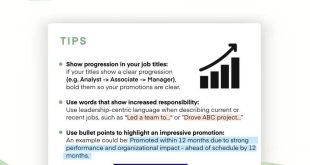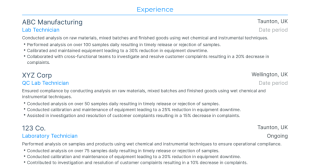How To Become A Construction Manager – Construction management is a vast field, there are many different things that go into it and many tips and tricks that managers use to be successful. Construction managers have the skills and knowledge to improve project delivery, communication and other aspects of project management. However, it can be difficult to start and understand all the reasons for running the project in one place. This ultimate guide to better construction management walks readers through the management of various construction projects.
Construction management is critical to the overall success and development of any project. Understanding construction management functions and the role they play can ensure the success of the project.
How To Become A Construction Manager
Contract management is an important part of construction management, and construction includes contracts between the owner, general contractor and subsequent subcontractors. Construction managers often have to negotiate terms and conditions and ensure compliance. All changes must be documented and agreed upon by all parties. Contract management works in many parts of construction management, such as purchase orders, change orders and other documents.
How To Become A Construction Manager, The Ultimate Guide
Another function of construction management is project planning. Project planning uses existing documents to create guidelines for the project. This includes planning, resource management, task definition and other areas of joint project management. Without this information and planning, the project will not work properly. Although sometimes these indirect costs are overlooked, the project plan should try to include all direct and indirect costs.
Cost management is a construction project management function. Without any management and cost understanding, construction management will be weak. Cost management involves not only budget changes but also budget creation. Using the plans and estimates created in the project management phase of construction management, a manager can easily prepare the budget. The next most difficult part of the job is trying to ensure that the project stays on budget, that is, minimizing risk.
I make you live and die based on their risk and how they handle it. Part of risk management is avoidance and avoidance, sometimes companies simply have to accept the risk. Eliminating the risk may mean transferring the risk from one company to another or removing the situation or thing that causes the risk. It can also be to avoid danger. Risk management is absolutely critical to any project because risk management can be the difference between making and losing money.
Safety is always a concern in the construction industry, the industry as a whole is a high risk sector. Safety management is an important part of the construction project, because it is the responsibility of the construction manager to ensure the safety of all workers and future users of the site. A construction manager should be concerned about fire and other problems at the construction site. Burnout alone is one of the biggest safety issues in the industry and causes many different problems.
Simple Construction Site Safety Rules
Construction managers are responsible for quality assurance and quality control. Construction management is another important aspect. Quality management ensures that the project is successful once it is completed. The construction manager should analyze the work, materials and methods to determine the quality of the project. This is important because if there is a problem with one or more items, if caught early, it will lead to rework, but it can be harmful or disastrous.
The overall workforce structure of construction projects can be confusing to someone outside the construction industry. Who reports to whom and who does what can be complicated; However, this will help you understand the construction project management hierarchy.
A construction manager may be hired to oversee the construction of the project. A construction manager is typically an independent contractor on a project. They may be hired by a general contractor, but are more often hired by the owner. The project manager manages the project, including the six activities listed above in the life of the project. All project participants will be under the construction manager.
A person becomes a construction manager after years of studying and working in the field. Must have knowledge of building codes, industry practices and communication skills. Many construction managers study topics such as construction management, construction science or engineering to develop their skills. Construction managers can earn certification, and certified construction managers are in high demand.
What Is Construction Management?
A construction project manager also manages a construction project. During the life of the project, they manage the project, including the six activities listed above. All project participants will be under the construction manager. A project manager is similar to a construction manager, except that he works for the general contractor instead of the owner. Usually, if a general contractor is hired, their project manager will manage the project rather than the construction manager. However, this is not always the case.
People become project managers in two ways. The usual way is to get a college degree and work experience. Project managers often have degrees in construction management, engineering, or other similar fields. They then work with project managers to learn more about the craft. Or people enter project management through careers in the construction industry.
A construction superintendent works for a contractor or subcontractor. Their day-to-day responsibilities may vary from company to company, but they generally work to ensure the successful and smooth completion of their assigned project. Small companies may have their supervisors do the same job as a project manager, but in a large company they may have a limited amount of responsibility. Supervisors often pass information from foreman to owners and vice versa. They are always responsible for the project foreman.
Depending on the business, people can become a building superintendent in different ways. Some companies may want their supervisors to attend college, but most are looking for experience. Two-year universities offer many courses that will help you in your daily work, but experience as a project leader is often important.
Project Management: What It Is, 3 Types, And Examples
A project foreman is usually the temporary supervisor of a project. Trains, directs, supervises and is generally responsible for staff and workers throughout the project. When evaluating the progress of the project, they should monitor the employee’s efforts. They organize the exact date of the project according to their schedule. They also write and record all the events in the field. If the project is going well, they document it, and if it goes badly, they document it. They help protect the companies they work for from default and other problems.
Formants do not need a college degree, but it is convenient to take courses in construction project management, accounting and other important work areas. However, many of these courses are offered through two-year universities, which can save you a lot of money.
All of these roles can be involved in managing a construction project, their responsibilities vary with the size of the business. They are responsible for different aspects of the project. The teams are managed by the foreman and the superintendent by managing the superiors. These roles and their hierarchy are important to understand who is responsible for each part of construction management.
Knowing how to manage a construction project takes time and involves a lot of work and research to make the project run successfully.
Let Your Personal Concierge Become Your Construction Project Manager
The first step in project management is to develop a project roadmap. The roadmap is a plan of how the project will start. Strictly speaking, it is an overview of the plan. This is used to create the right schedule and determine which performance metrics to use.
The next step is to identify the roles and responsibilities of everyone involved in the project, including stakeholders. This information is used to determine who needs to approve what and who is responsible for different parts of the project. This is important to know in the future and should be noted.
Writing scope and baselines is critical to the success of the project. This should be completed and agreed upon during the stakeholder meeting. Without this information it is difficult to judge where a project is. Setting the scope in writing, which everyone agrees on, is the best way to avoid scope shifting. Now, if something needs to be changed, they must do it in writing, marking the schedule and budget changes.
Planning is the next important step in construction management. Not having a program can be harmful. The construction or project manager should prepare a schedule to ensure that everything goes smoothly. This program should identify all the necessary steps and classes, along with the class that performs those steps and so on. Then it must be approved.
What Does A Project Manager Do?
If something comes up and you need to make a change in your schedule or plan, you should stick with it.
How to become a construction site manager, how to become project manager construction, become construction project manager, how to become project manager in construction, how to become hr manager, become certified construction manager, how to become project manager, how to become a construction safety manager, become a construction manager, how to become a construction manager, how to become a construction project manager, how to become a certified construction manager



